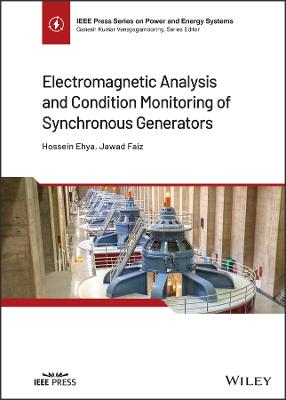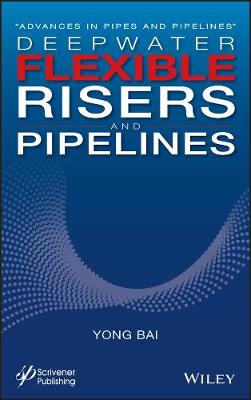New Swing-Contract Design for Wholesale Power Markets
 -15%
portes grátis
-15%
portes grátis
New Swing-Contract Design for Wholesale Power Markets
Tesfatsion, Leigh
John Wiley & Sons Inc
02/2021
288
Dura
Inglês
9781119670124
15 a 20 dias
540
Descrição não disponível.
Preface xiii
Author Biography xiv
Acknowledgments xv
Chapter 1 Introduction 1
Chapter 2 US RTO/ISO-Managed Wholesale Power Markets: Overview 9
2.1 Chapter Preview 9
2.2 General Goals for Wholesale Power Market Design 9
2.3 US RTO/ISO-Managed Market Operations 10
2.4 Stresses Faced by Current US RTO/ISO-Managed Markets 14
Chapter 3 Motivation For Current Study 17
3.1 Chapter Preview 17
3.2 Problematic Design Aspects of US RTO/ISO-Managed Wholesale Power Markets 17
3.2.1 Artificial Distinction Between Energy and Reserve 17
3.2.2 Problematic use of Hedonic Pricing 18
3.2.3 Revenue Insufficiency and Incentive Problems 19
3.2.4 Computational Fragility of LMP Derivations 20
3.2.5 Performance Payment in Advance of Performance Delivery 22
3.2.6 Minimal Direct Representation of Retail Customer Interests 23
3.2.7 Reliance on Overly Simplistic Cost Conceptions 24
3.2.8 Use of Spot-Market Pricing for Forward Markets 26
3.3 Relation of Current Study to Previous Swing-Contract Work 26
Chapter 4 Swing Contracts For Iso-Managed Wholesale Power Markets 29
4.1 Swing Contract Overview 29
4.2 Swing Contracts: General Formulation 29
4.3 Swing Contracts in Firm or Option Form 31
Chapter 5 Illustrative Swing-Contract Reserve Offers 35
5.1 Chapter Preview 35
5.2 A Simple Energy-Block Swing Contract in Firm Form 37
5.3 An Energy-Block Swing Contract in Option Form 40
5.4 Swing-Contract Implementation of Standard Supply Offers 41
5.5 A Swing Contract Offering Continuous Swing (Flexibility) in Power and Ramp 47
5.6 A Swing Contract Offering Battery Services 49
5.7 Swing-Contract Facilitation of Private Bilateral Contracting 52
Chapter 6 Swing-Contract Market Design 55
6.1 Chapter Preview 55
6.2 General Swing-Contract Market Formulation 55
6.3 Financial and Physical Feasibility of Swing-Contract Offers 58
6.4 Reserve Bids 58
6.5 Handling of Fixed Reserve Bids and Non-Dispatched Power 60
6.6 Performance Penalties and Incentives 60
6.7 ISO Cost Allocation 61
Chapter 7 Swing-Contract Market Optimization: Base-Case Milp Formulation 67
7.1 Chapter Preview 67
7.2 General Assumptions and Notation 68
7.3 Discretization of the ISO's Optimization Problem 69
7.4 ISO Objective Function 73
7.5 Complete Analytical MILP Formulation 74
7.6 Additional Discussion of Optimization Aspects 76
7.7 Five-Bus Test Case 78
7.8 Thirty Bus Test Case with Adaptive Reserve Zones 81
Chapter 8 Inclusion Of Reserve Offers With Price Swing 85
8.1 Chapter Preview 85
8.2 Cost Function Preliminaries 86
8.3 MILP Tractable form of Reserve Offers with Price Swing 87
Chapter 9 Inclusion Of Price-Sensitive Reserve Bids 93
9.1 Chapter Preview 93
9.2 Incorporation of Benefits 94
9.3 Modeling of Price-Sensitive Reserve Bids 96
9.3.1 Standard Demand Function Formulation 96
9.3.2 Reserve Bids with Time-of-Use Pricing 97
9.3.3 Reserve Bids with Price Swing 97
9.3.4 Reserve Bids Directly Expressed as Benefit Functions 99
9.4 MILP Tractable Approximation of Benefit Functions 100
Chapter 10 The Linked Swing-Contract Market Design 105
10.1 Chapter Preview 105
10.2 Multistage Optimization and Time Inconsistency 107
10.3 Settlement Time-Consistency of Swing-Contract Markets 109
10.4 Swing-Contract Long-Term Forward Markets 111
10.5 Swing-Contract Short-Term Forward Markets 112
10.6 Swing-Contract Very Short-Term Forward Markets 113
10.7 Swing-Contract Deployment in Real-Time Operations 114
Chapter 11 Illustration: Linked Day-Ahead And Hour-Ahead Swing-Contract Markets 117
11.1 Chapter Preview 117
11.2 Hour-Ahead Market with Reserve Offers Consisting of Swing-Contract Portfolios 117
11.3 SCED Solution for Hour-Ahead Swing-Contract Market 122
11.3.1 Overview 122
11.3.2 Power Balance 122
11.3.3 Coverage of the ISO's Uncertainty Set 123
11.3.4 Constrained Minimization of Expected Cost 125
11.4 Linked Day-Ahead and Hour-Ahead Markets 126
Chapter 12 Standard Modeling Of A Competitive Market 131
12.1 Chapter Preview 131
12.2 Key Definitions 131
12.3 Standard Competitive Market Assumptions 132
12.4 Law of One Price for Commodities 132
12.5 Competitive Market: Basic Formulation 133
12.6 Net Surplus Extraction 136
12.7 Market Efficiency Metric 137
12.8 Market Efficiency and Pricing Rules 139
12.9 Strategic Trade Behavior and Trader Market Power 140
CHAPTER 13 US RTO/ISO-Managed Markets: Efficiency And Market Power 143
13.1 Chapter Preview 143
13.2 Daily Market Operations 144
13.3 Illustrative Analytical DAM Formulation 146
13.4 Net Surplus Extraction in the Illustrative DAM 147
13.5 Market Power in the Illustrative DAM: Type-I Error 152
13.6 Market Power in the Illustrative DAM: Type-II Error 156
13.7 Market Inefficiency in the Illustrative DAM 160
13.8 DAM Performance: General Assessment 163
13.9 Scheduling of Bilateral Contracts 165
Chapter 14 Comparisons With Swing-Contract Markets 167
14.1 Chapter Preview 167
14.2 Product Definition in US RTO/ISO-Managed Markets 168
14.3 Wholesale Power and the Law of One Price (Not) 170
14.4 Differential vs. Uniform Pricing 171
14.5 Comparison of SC and Current US DAM Designs 172
Chapter 15 Advantages Of The Linked Swing-Contract Market Design 175
15.1 Chapter Preview 175
15.2 SC Markets are Physically-Covered Insurance Markets 176
15.3 Longer-Term SC Markets Support New Investment 177
15.3.1 Energy-Only Market 179
15.3.2 Centrally Managed Capacity Market 181
15.3.3 LSE Bilateral Contract Obligations 182
15.4 SC Markets Ensure Revenue Sufficiency 183
15.5 SC Markets Ameliorate Merit-Order Concerns 184
15.6 SC Markets are Robust-Control Mechanisms 185
15.7 SC Markets Reduce Rule Complexity 186
15.8 SC Markets Reduce Gaming Opportunities 187
15.9 SC Markets have Smaller-Sized Optimizations 189
15.10 Additional Advantages of SC Markets 190
15.10.1 Ensure a Level Playing Field for Resource Participation 190
15.10.2 Permit Co-Optimization of Diverse Reserve 191
15.10.3 Appropriately Remunerate Diversity and Flexibility 191
15.10.4 Encourage Accurate Forecasting and Dispatch Following 191
15.10.5 Ensure Settlement Time-Consistency 191
Chapter 16 Gradual Transition To Linked Swing-Contract Markets 193
16.1 Chapter Preview 193
16.2 A DAM Formulation Permitting Gradual Transition 195
16.3 Cost Function Preliminaries for the Transitional DAM 197
16.4 MILP SCUC/SCED Optimization for the Transitional DAM 201
Chapter 17 Swing-Contract Support For Integrated Transmission And Distribution Systems 209
17.1 Chapter Preview 209
17.2 Transactive Energy System Design for ITD Systems 211
17.3 Role of Distribution Utilities 215
17.4 An IDSO-Managed Bid-Based TES Design for Households 216
17.5 IDSOs as Grid-Edge Resource Aggregators 219
17.6 Swing-Contract Support for IDSO Participation in Wholesale Power Markets 220
Chapter 18 Design Evaluation Via The ITD TES Platform 221
18.1 Chapter Preview 221
18.2 Design Readiness Levels 222
18.3 An ITD TES Platform Permitting TES Design Evaluation 223
18.4 Illustrative Test Cases: Overview 226
18.5 Illustrative Test Cases: Report 229
18.5.1 IDSO Peak-Load Reduction Capabilities 229
18.5.2 IDSO Load-Matching Capabilities 229
18.5.3 Household ITD Test Cases: Discussion 233
Chapter 19 Potential Future Research Directions 235
19.1 Effective use of Option Swing Contracts 235
19.2 Representation of Reserve Bids 236
19.3 Compensation for Storage Services 236
19.4 Compensation for Reliability Services 236
19.5 Representation of Power-Paths 237
19.6 Implementation of Contract-Clearing Optimizations for Swing-Contract Markets 237
19.7 Gradual Transition to a Swing-Contract Market 238
Chapter 20 Conclusion: The Dots Keep Connecting 239
Appendix A Appendices 241
References 249
Index 259
Author Biography xiv
Acknowledgments xv
Chapter 1 Introduction 1
Chapter 2 US RTO/ISO-Managed Wholesale Power Markets: Overview 9
2.1 Chapter Preview 9
2.2 General Goals for Wholesale Power Market Design 9
2.3 US RTO/ISO-Managed Market Operations 10
2.4 Stresses Faced by Current US RTO/ISO-Managed Markets 14
Chapter 3 Motivation For Current Study 17
3.1 Chapter Preview 17
3.2 Problematic Design Aspects of US RTO/ISO-Managed Wholesale Power Markets 17
3.2.1 Artificial Distinction Between Energy and Reserve 17
3.2.2 Problematic use of Hedonic Pricing 18
3.2.3 Revenue Insufficiency and Incentive Problems 19
3.2.4 Computational Fragility of LMP Derivations 20
3.2.5 Performance Payment in Advance of Performance Delivery 22
3.2.6 Minimal Direct Representation of Retail Customer Interests 23
3.2.7 Reliance on Overly Simplistic Cost Conceptions 24
3.2.8 Use of Spot-Market Pricing for Forward Markets 26
3.3 Relation of Current Study to Previous Swing-Contract Work 26
Chapter 4 Swing Contracts For Iso-Managed Wholesale Power Markets 29
4.1 Swing Contract Overview 29
4.2 Swing Contracts: General Formulation 29
4.3 Swing Contracts in Firm or Option Form 31
Chapter 5 Illustrative Swing-Contract Reserve Offers 35
5.1 Chapter Preview 35
5.2 A Simple Energy-Block Swing Contract in Firm Form 37
5.3 An Energy-Block Swing Contract in Option Form 40
5.4 Swing-Contract Implementation of Standard Supply Offers 41
5.5 A Swing Contract Offering Continuous Swing (Flexibility) in Power and Ramp 47
5.6 A Swing Contract Offering Battery Services 49
5.7 Swing-Contract Facilitation of Private Bilateral Contracting 52
Chapter 6 Swing-Contract Market Design 55
6.1 Chapter Preview 55
6.2 General Swing-Contract Market Formulation 55
6.3 Financial and Physical Feasibility of Swing-Contract Offers 58
6.4 Reserve Bids 58
6.5 Handling of Fixed Reserve Bids and Non-Dispatched Power 60
6.6 Performance Penalties and Incentives 60
6.7 ISO Cost Allocation 61
Chapter 7 Swing-Contract Market Optimization: Base-Case Milp Formulation 67
7.1 Chapter Preview 67
7.2 General Assumptions and Notation 68
7.3 Discretization of the ISO's Optimization Problem 69
7.4 ISO Objective Function 73
7.5 Complete Analytical MILP Formulation 74
7.6 Additional Discussion of Optimization Aspects 76
7.7 Five-Bus Test Case 78
7.8 Thirty Bus Test Case with Adaptive Reserve Zones 81
Chapter 8 Inclusion Of Reserve Offers With Price Swing 85
8.1 Chapter Preview 85
8.2 Cost Function Preliminaries 86
8.3 MILP Tractable form of Reserve Offers with Price Swing 87
Chapter 9 Inclusion Of Price-Sensitive Reserve Bids 93
9.1 Chapter Preview 93
9.2 Incorporation of Benefits 94
9.3 Modeling of Price-Sensitive Reserve Bids 96
9.3.1 Standard Demand Function Formulation 96
9.3.2 Reserve Bids with Time-of-Use Pricing 97
9.3.3 Reserve Bids with Price Swing 97
9.3.4 Reserve Bids Directly Expressed as Benefit Functions 99
9.4 MILP Tractable Approximation of Benefit Functions 100
Chapter 10 The Linked Swing-Contract Market Design 105
10.1 Chapter Preview 105
10.2 Multistage Optimization and Time Inconsistency 107
10.3 Settlement Time-Consistency of Swing-Contract Markets 109
10.4 Swing-Contract Long-Term Forward Markets 111
10.5 Swing-Contract Short-Term Forward Markets 112
10.6 Swing-Contract Very Short-Term Forward Markets 113
10.7 Swing-Contract Deployment in Real-Time Operations 114
Chapter 11 Illustration: Linked Day-Ahead And Hour-Ahead Swing-Contract Markets 117
11.1 Chapter Preview 117
11.2 Hour-Ahead Market with Reserve Offers Consisting of Swing-Contract Portfolios 117
11.3 SCED Solution for Hour-Ahead Swing-Contract Market 122
11.3.1 Overview 122
11.3.2 Power Balance 122
11.3.3 Coverage of the ISO's Uncertainty Set 123
11.3.4 Constrained Minimization of Expected Cost 125
11.4 Linked Day-Ahead and Hour-Ahead Markets 126
Chapter 12 Standard Modeling Of A Competitive Market 131
12.1 Chapter Preview 131
12.2 Key Definitions 131
12.3 Standard Competitive Market Assumptions 132
12.4 Law of One Price for Commodities 132
12.5 Competitive Market: Basic Formulation 133
12.6 Net Surplus Extraction 136
12.7 Market Efficiency Metric 137
12.8 Market Efficiency and Pricing Rules 139
12.9 Strategic Trade Behavior and Trader Market Power 140
CHAPTER 13 US RTO/ISO-Managed Markets: Efficiency And Market Power 143
13.1 Chapter Preview 143
13.2 Daily Market Operations 144
13.3 Illustrative Analytical DAM Formulation 146
13.4 Net Surplus Extraction in the Illustrative DAM 147
13.5 Market Power in the Illustrative DAM: Type-I Error 152
13.6 Market Power in the Illustrative DAM: Type-II Error 156
13.7 Market Inefficiency in the Illustrative DAM 160
13.8 DAM Performance: General Assessment 163
13.9 Scheduling of Bilateral Contracts 165
Chapter 14 Comparisons With Swing-Contract Markets 167
14.1 Chapter Preview 167
14.2 Product Definition in US RTO/ISO-Managed Markets 168
14.3 Wholesale Power and the Law of One Price (Not) 170
14.4 Differential vs. Uniform Pricing 171
14.5 Comparison of SC and Current US DAM Designs 172
Chapter 15 Advantages Of The Linked Swing-Contract Market Design 175
15.1 Chapter Preview 175
15.2 SC Markets are Physically-Covered Insurance Markets 176
15.3 Longer-Term SC Markets Support New Investment 177
15.3.1 Energy-Only Market 179
15.3.2 Centrally Managed Capacity Market 181
15.3.3 LSE Bilateral Contract Obligations 182
15.4 SC Markets Ensure Revenue Sufficiency 183
15.5 SC Markets Ameliorate Merit-Order Concerns 184
15.6 SC Markets are Robust-Control Mechanisms 185
15.7 SC Markets Reduce Rule Complexity 186
15.8 SC Markets Reduce Gaming Opportunities 187
15.9 SC Markets have Smaller-Sized Optimizations 189
15.10 Additional Advantages of SC Markets 190
15.10.1 Ensure a Level Playing Field for Resource Participation 190
15.10.2 Permit Co-Optimization of Diverse Reserve 191
15.10.3 Appropriately Remunerate Diversity and Flexibility 191
15.10.4 Encourage Accurate Forecasting and Dispatch Following 191
15.10.5 Ensure Settlement Time-Consistency 191
Chapter 16 Gradual Transition To Linked Swing-Contract Markets 193
16.1 Chapter Preview 193
16.2 A DAM Formulation Permitting Gradual Transition 195
16.3 Cost Function Preliminaries for the Transitional DAM 197
16.4 MILP SCUC/SCED Optimization for the Transitional DAM 201
Chapter 17 Swing-Contract Support For Integrated Transmission And Distribution Systems 209
17.1 Chapter Preview 209
17.2 Transactive Energy System Design for ITD Systems 211
17.3 Role of Distribution Utilities 215
17.4 An IDSO-Managed Bid-Based TES Design for Households 216
17.5 IDSOs as Grid-Edge Resource Aggregators 219
17.6 Swing-Contract Support for IDSO Participation in Wholesale Power Markets 220
Chapter 18 Design Evaluation Via The ITD TES Platform 221
18.1 Chapter Preview 221
18.2 Design Readiness Levels 222
18.3 An ITD TES Platform Permitting TES Design Evaluation 223
18.4 Illustrative Test Cases: Overview 226
18.5 Illustrative Test Cases: Report 229
18.5.1 IDSO Peak-Load Reduction Capabilities 229
18.5.2 IDSO Load-Matching Capabilities 229
18.5.3 Household ITD Test Cases: Discussion 233
Chapter 19 Potential Future Research Directions 235
19.1 Effective use of Option Swing Contracts 235
19.2 Representation of Reserve Bids 236
19.3 Compensation for Storage Services 236
19.4 Compensation for Reliability Services 236
19.5 Representation of Power-Paths 237
19.6 Implementation of Contract-Clearing Optimizations for Swing-Contract Markets 237
19.7 Gradual Transition to a Swing-Contract Market 238
Chapter 20 Conclusion: The Dots Keep Connecting 239
Appendix A Appendices 241
References 249
Index 259
Este título pertence ao(s) assunto(s) indicados(s). Para ver outros títulos clique no assunto desejado.
swing contracts; flexible reserve provision; wholesale power market; electric power system; wholesale electric power markets; power markets; net-load balancing service; energy resources; power paths; electrical engineering; renewable energy; ISO/RTO
Preface xiii
Author Biography xiv
Acknowledgments xv
Chapter 1 Introduction 1
Chapter 2 US RTO/ISO-Managed Wholesale Power Markets: Overview 9
2.1 Chapter Preview 9
2.2 General Goals for Wholesale Power Market Design 9
2.3 US RTO/ISO-Managed Market Operations 10
2.4 Stresses Faced by Current US RTO/ISO-Managed Markets 14
Chapter 3 Motivation For Current Study 17
3.1 Chapter Preview 17
3.2 Problematic Design Aspects of US RTO/ISO-Managed Wholesale Power Markets 17
3.2.1 Artificial Distinction Between Energy and Reserve 17
3.2.2 Problematic use of Hedonic Pricing 18
3.2.3 Revenue Insufficiency and Incentive Problems 19
3.2.4 Computational Fragility of LMP Derivations 20
3.2.5 Performance Payment in Advance of Performance Delivery 22
3.2.6 Minimal Direct Representation of Retail Customer Interests 23
3.2.7 Reliance on Overly Simplistic Cost Conceptions 24
3.2.8 Use of Spot-Market Pricing for Forward Markets 26
3.3 Relation of Current Study to Previous Swing-Contract Work 26
Chapter 4 Swing Contracts For Iso-Managed Wholesale Power Markets 29
4.1 Swing Contract Overview 29
4.2 Swing Contracts: General Formulation 29
4.3 Swing Contracts in Firm or Option Form 31
Chapter 5 Illustrative Swing-Contract Reserve Offers 35
5.1 Chapter Preview 35
5.2 A Simple Energy-Block Swing Contract in Firm Form 37
5.3 An Energy-Block Swing Contract in Option Form 40
5.4 Swing-Contract Implementation of Standard Supply Offers 41
5.5 A Swing Contract Offering Continuous Swing (Flexibility) in Power and Ramp 47
5.6 A Swing Contract Offering Battery Services 49
5.7 Swing-Contract Facilitation of Private Bilateral Contracting 52
Chapter 6 Swing-Contract Market Design 55
6.1 Chapter Preview 55
6.2 General Swing-Contract Market Formulation 55
6.3 Financial and Physical Feasibility of Swing-Contract Offers 58
6.4 Reserve Bids 58
6.5 Handling of Fixed Reserve Bids and Non-Dispatched Power 60
6.6 Performance Penalties and Incentives 60
6.7 ISO Cost Allocation 61
Chapter 7 Swing-Contract Market Optimization: Base-Case Milp Formulation 67
7.1 Chapter Preview 67
7.2 General Assumptions and Notation 68
7.3 Discretization of the ISO's Optimization Problem 69
7.4 ISO Objective Function 73
7.5 Complete Analytical MILP Formulation 74
7.6 Additional Discussion of Optimization Aspects 76
7.7 Five-Bus Test Case 78
7.8 Thirty Bus Test Case with Adaptive Reserve Zones 81
Chapter 8 Inclusion Of Reserve Offers With Price Swing 85
8.1 Chapter Preview 85
8.2 Cost Function Preliminaries 86
8.3 MILP Tractable form of Reserve Offers with Price Swing 87
Chapter 9 Inclusion Of Price-Sensitive Reserve Bids 93
9.1 Chapter Preview 93
9.2 Incorporation of Benefits 94
9.3 Modeling of Price-Sensitive Reserve Bids 96
9.3.1 Standard Demand Function Formulation 96
9.3.2 Reserve Bids with Time-of-Use Pricing 97
9.3.3 Reserve Bids with Price Swing 97
9.3.4 Reserve Bids Directly Expressed as Benefit Functions 99
9.4 MILP Tractable Approximation of Benefit Functions 100
Chapter 10 The Linked Swing-Contract Market Design 105
10.1 Chapter Preview 105
10.2 Multistage Optimization and Time Inconsistency 107
10.3 Settlement Time-Consistency of Swing-Contract Markets 109
10.4 Swing-Contract Long-Term Forward Markets 111
10.5 Swing-Contract Short-Term Forward Markets 112
10.6 Swing-Contract Very Short-Term Forward Markets 113
10.7 Swing-Contract Deployment in Real-Time Operations 114
Chapter 11 Illustration: Linked Day-Ahead And Hour-Ahead Swing-Contract Markets 117
11.1 Chapter Preview 117
11.2 Hour-Ahead Market with Reserve Offers Consisting of Swing-Contract Portfolios 117
11.3 SCED Solution for Hour-Ahead Swing-Contract Market 122
11.3.1 Overview 122
11.3.2 Power Balance 122
11.3.3 Coverage of the ISO's Uncertainty Set 123
11.3.4 Constrained Minimization of Expected Cost 125
11.4 Linked Day-Ahead and Hour-Ahead Markets 126
Chapter 12 Standard Modeling Of A Competitive Market 131
12.1 Chapter Preview 131
12.2 Key Definitions 131
12.3 Standard Competitive Market Assumptions 132
12.4 Law of One Price for Commodities 132
12.5 Competitive Market: Basic Formulation 133
12.6 Net Surplus Extraction 136
12.7 Market Efficiency Metric 137
12.8 Market Efficiency and Pricing Rules 139
12.9 Strategic Trade Behavior and Trader Market Power 140
CHAPTER 13 US RTO/ISO-Managed Markets: Efficiency And Market Power 143
13.1 Chapter Preview 143
13.2 Daily Market Operations 144
13.3 Illustrative Analytical DAM Formulation 146
13.4 Net Surplus Extraction in the Illustrative DAM 147
13.5 Market Power in the Illustrative DAM: Type-I Error 152
13.6 Market Power in the Illustrative DAM: Type-II Error 156
13.7 Market Inefficiency in the Illustrative DAM 160
13.8 DAM Performance: General Assessment 163
13.9 Scheduling of Bilateral Contracts 165
Chapter 14 Comparisons With Swing-Contract Markets 167
14.1 Chapter Preview 167
14.2 Product Definition in US RTO/ISO-Managed Markets 168
14.3 Wholesale Power and the Law of One Price (Not) 170
14.4 Differential vs. Uniform Pricing 171
14.5 Comparison of SC and Current US DAM Designs 172
Chapter 15 Advantages Of The Linked Swing-Contract Market Design 175
15.1 Chapter Preview 175
15.2 SC Markets are Physically-Covered Insurance Markets 176
15.3 Longer-Term SC Markets Support New Investment 177
15.3.1 Energy-Only Market 179
15.3.2 Centrally Managed Capacity Market 181
15.3.3 LSE Bilateral Contract Obligations 182
15.4 SC Markets Ensure Revenue Sufficiency 183
15.5 SC Markets Ameliorate Merit-Order Concerns 184
15.6 SC Markets are Robust-Control Mechanisms 185
15.7 SC Markets Reduce Rule Complexity 186
15.8 SC Markets Reduce Gaming Opportunities 187
15.9 SC Markets have Smaller-Sized Optimizations 189
15.10 Additional Advantages of SC Markets 190
15.10.1 Ensure a Level Playing Field for Resource Participation 190
15.10.2 Permit Co-Optimization of Diverse Reserve 191
15.10.3 Appropriately Remunerate Diversity and Flexibility 191
15.10.4 Encourage Accurate Forecasting and Dispatch Following 191
15.10.5 Ensure Settlement Time-Consistency 191
Chapter 16 Gradual Transition To Linked Swing-Contract Markets 193
16.1 Chapter Preview 193
16.2 A DAM Formulation Permitting Gradual Transition 195
16.3 Cost Function Preliminaries for the Transitional DAM 197
16.4 MILP SCUC/SCED Optimization for the Transitional DAM 201
Chapter 17 Swing-Contract Support For Integrated Transmission And Distribution Systems 209
17.1 Chapter Preview 209
17.2 Transactive Energy System Design for ITD Systems 211
17.3 Role of Distribution Utilities 215
17.4 An IDSO-Managed Bid-Based TES Design for Households 216
17.5 IDSOs as Grid-Edge Resource Aggregators 219
17.6 Swing-Contract Support for IDSO Participation in Wholesale Power Markets 220
Chapter 18 Design Evaluation Via The ITD TES Platform 221
18.1 Chapter Preview 221
18.2 Design Readiness Levels 222
18.3 An ITD TES Platform Permitting TES Design Evaluation 223
18.4 Illustrative Test Cases: Overview 226
18.5 Illustrative Test Cases: Report 229
18.5.1 IDSO Peak-Load Reduction Capabilities 229
18.5.2 IDSO Load-Matching Capabilities 229
18.5.3 Household ITD Test Cases: Discussion 233
Chapter 19 Potential Future Research Directions 235
19.1 Effective use of Option Swing Contracts 235
19.2 Representation of Reserve Bids 236
19.3 Compensation for Storage Services 236
19.4 Compensation for Reliability Services 236
19.5 Representation of Power-Paths 237
19.6 Implementation of Contract-Clearing Optimizations for Swing-Contract Markets 237
19.7 Gradual Transition to a Swing-Contract Market 238
Chapter 20 Conclusion: The Dots Keep Connecting 239
Appendix A Appendices 241
References 249
Index 259
Author Biography xiv
Acknowledgments xv
Chapter 1 Introduction 1
Chapter 2 US RTO/ISO-Managed Wholesale Power Markets: Overview 9
2.1 Chapter Preview 9
2.2 General Goals for Wholesale Power Market Design 9
2.3 US RTO/ISO-Managed Market Operations 10
2.4 Stresses Faced by Current US RTO/ISO-Managed Markets 14
Chapter 3 Motivation For Current Study 17
3.1 Chapter Preview 17
3.2 Problematic Design Aspects of US RTO/ISO-Managed Wholesale Power Markets 17
3.2.1 Artificial Distinction Between Energy and Reserve 17
3.2.2 Problematic use of Hedonic Pricing 18
3.2.3 Revenue Insufficiency and Incentive Problems 19
3.2.4 Computational Fragility of LMP Derivations 20
3.2.5 Performance Payment in Advance of Performance Delivery 22
3.2.6 Minimal Direct Representation of Retail Customer Interests 23
3.2.7 Reliance on Overly Simplistic Cost Conceptions 24
3.2.8 Use of Spot-Market Pricing for Forward Markets 26
3.3 Relation of Current Study to Previous Swing-Contract Work 26
Chapter 4 Swing Contracts For Iso-Managed Wholesale Power Markets 29
4.1 Swing Contract Overview 29
4.2 Swing Contracts: General Formulation 29
4.3 Swing Contracts in Firm or Option Form 31
Chapter 5 Illustrative Swing-Contract Reserve Offers 35
5.1 Chapter Preview 35
5.2 A Simple Energy-Block Swing Contract in Firm Form 37
5.3 An Energy-Block Swing Contract in Option Form 40
5.4 Swing-Contract Implementation of Standard Supply Offers 41
5.5 A Swing Contract Offering Continuous Swing (Flexibility) in Power and Ramp 47
5.6 A Swing Contract Offering Battery Services 49
5.7 Swing-Contract Facilitation of Private Bilateral Contracting 52
Chapter 6 Swing-Contract Market Design 55
6.1 Chapter Preview 55
6.2 General Swing-Contract Market Formulation 55
6.3 Financial and Physical Feasibility of Swing-Contract Offers 58
6.4 Reserve Bids 58
6.5 Handling of Fixed Reserve Bids and Non-Dispatched Power 60
6.6 Performance Penalties and Incentives 60
6.7 ISO Cost Allocation 61
Chapter 7 Swing-Contract Market Optimization: Base-Case Milp Formulation 67
7.1 Chapter Preview 67
7.2 General Assumptions and Notation 68
7.3 Discretization of the ISO's Optimization Problem 69
7.4 ISO Objective Function 73
7.5 Complete Analytical MILP Formulation 74
7.6 Additional Discussion of Optimization Aspects 76
7.7 Five-Bus Test Case 78
7.8 Thirty Bus Test Case with Adaptive Reserve Zones 81
Chapter 8 Inclusion Of Reserve Offers With Price Swing 85
8.1 Chapter Preview 85
8.2 Cost Function Preliminaries 86
8.3 MILP Tractable form of Reserve Offers with Price Swing 87
Chapter 9 Inclusion Of Price-Sensitive Reserve Bids 93
9.1 Chapter Preview 93
9.2 Incorporation of Benefits 94
9.3 Modeling of Price-Sensitive Reserve Bids 96
9.3.1 Standard Demand Function Formulation 96
9.3.2 Reserve Bids with Time-of-Use Pricing 97
9.3.3 Reserve Bids with Price Swing 97
9.3.4 Reserve Bids Directly Expressed as Benefit Functions 99
9.4 MILP Tractable Approximation of Benefit Functions 100
Chapter 10 The Linked Swing-Contract Market Design 105
10.1 Chapter Preview 105
10.2 Multistage Optimization and Time Inconsistency 107
10.3 Settlement Time-Consistency of Swing-Contract Markets 109
10.4 Swing-Contract Long-Term Forward Markets 111
10.5 Swing-Contract Short-Term Forward Markets 112
10.6 Swing-Contract Very Short-Term Forward Markets 113
10.7 Swing-Contract Deployment in Real-Time Operations 114
Chapter 11 Illustration: Linked Day-Ahead And Hour-Ahead Swing-Contract Markets 117
11.1 Chapter Preview 117
11.2 Hour-Ahead Market with Reserve Offers Consisting of Swing-Contract Portfolios 117
11.3 SCED Solution for Hour-Ahead Swing-Contract Market 122
11.3.1 Overview 122
11.3.2 Power Balance 122
11.3.3 Coverage of the ISO's Uncertainty Set 123
11.3.4 Constrained Minimization of Expected Cost 125
11.4 Linked Day-Ahead and Hour-Ahead Markets 126
Chapter 12 Standard Modeling Of A Competitive Market 131
12.1 Chapter Preview 131
12.2 Key Definitions 131
12.3 Standard Competitive Market Assumptions 132
12.4 Law of One Price for Commodities 132
12.5 Competitive Market: Basic Formulation 133
12.6 Net Surplus Extraction 136
12.7 Market Efficiency Metric 137
12.8 Market Efficiency and Pricing Rules 139
12.9 Strategic Trade Behavior and Trader Market Power 140
CHAPTER 13 US RTO/ISO-Managed Markets: Efficiency And Market Power 143
13.1 Chapter Preview 143
13.2 Daily Market Operations 144
13.3 Illustrative Analytical DAM Formulation 146
13.4 Net Surplus Extraction in the Illustrative DAM 147
13.5 Market Power in the Illustrative DAM: Type-I Error 152
13.6 Market Power in the Illustrative DAM: Type-II Error 156
13.7 Market Inefficiency in the Illustrative DAM 160
13.8 DAM Performance: General Assessment 163
13.9 Scheduling of Bilateral Contracts 165
Chapter 14 Comparisons With Swing-Contract Markets 167
14.1 Chapter Preview 167
14.2 Product Definition in US RTO/ISO-Managed Markets 168
14.3 Wholesale Power and the Law of One Price (Not) 170
14.4 Differential vs. Uniform Pricing 171
14.5 Comparison of SC and Current US DAM Designs 172
Chapter 15 Advantages Of The Linked Swing-Contract Market Design 175
15.1 Chapter Preview 175
15.2 SC Markets are Physically-Covered Insurance Markets 176
15.3 Longer-Term SC Markets Support New Investment 177
15.3.1 Energy-Only Market 179
15.3.2 Centrally Managed Capacity Market 181
15.3.3 LSE Bilateral Contract Obligations 182
15.4 SC Markets Ensure Revenue Sufficiency 183
15.5 SC Markets Ameliorate Merit-Order Concerns 184
15.6 SC Markets are Robust-Control Mechanisms 185
15.7 SC Markets Reduce Rule Complexity 186
15.8 SC Markets Reduce Gaming Opportunities 187
15.9 SC Markets have Smaller-Sized Optimizations 189
15.10 Additional Advantages of SC Markets 190
15.10.1 Ensure a Level Playing Field for Resource Participation 190
15.10.2 Permit Co-Optimization of Diverse Reserve 191
15.10.3 Appropriately Remunerate Diversity and Flexibility 191
15.10.4 Encourage Accurate Forecasting and Dispatch Following 191
15.10.5 Ensure Settlement Time-Consistency 191
Chapter 16 Gradual Transition To Linked Swing-Contract Markets 193
16.1 Chapter Preview 193
16.2 A DAM Formulation Permitting Gradual Transition 195
16.3 Cost Function Preliminaries for the Transitional DAM 197
16.4 MILP SCUC/SCED Optimization for the Transitional DAM 201
Chapter 17 Swing-Contract Support For Integrated Transmission And Distribution Systems 209
17.1 Chapter Preview 209
17.2 Transactive Energy System Design for ITD Systems 211
17.3 Role of Distribution Utilities 215
17.4 An IDSO-Managed Bid-Based TES Design for Households 216
17.5 IDSOs as Grid-Edge Resource Aggregators 219
17.6 Swing-Contract Support for IDSO Participation in Wholesale Power Markets 220
Chapter 18 Design Evaluation Via The ITD TES Platform 221
18.1 Chapter Preview 221
18.2 Design Readiness Levels 222
18.3 An ITD TES Platform Permitting TES Design Evaluation 223
18.4 Illustrative Test Cases: Overview 226
18.5 Illustrative Test Cases: Report 229
18.5.1 IDSO Peak-Load Reduction Capabilities 229
18.5.2 IDSO Load-Matching Capabilities 229
18.5.3 Household ITD Test Cases: Discussion 233
Chapter 19 Potential Future Research Directions 235
19.1 Effective use of Option Swing Contracts 235
19.2 Representation of Reserve Bids 236
19.3 Compensation for Storage Services 236
19.4 Compensation for Reliability Services 236
19.5 Representation of Power-Paths 237
19.6 Implementation of Contract-Clearing Optimizations for Swing-Contract Markets 237
19.7 Gradual Transition to a Swing-Contract Market 238
Chapter 20 Conclusion: The Dots Keep Connecting 239
Appendix A Appendices 241
References 249
Index 259
Este título pertence ao(s) assunto(s) indicados(s). Para ver outros títulos clique no assunto desejado.







